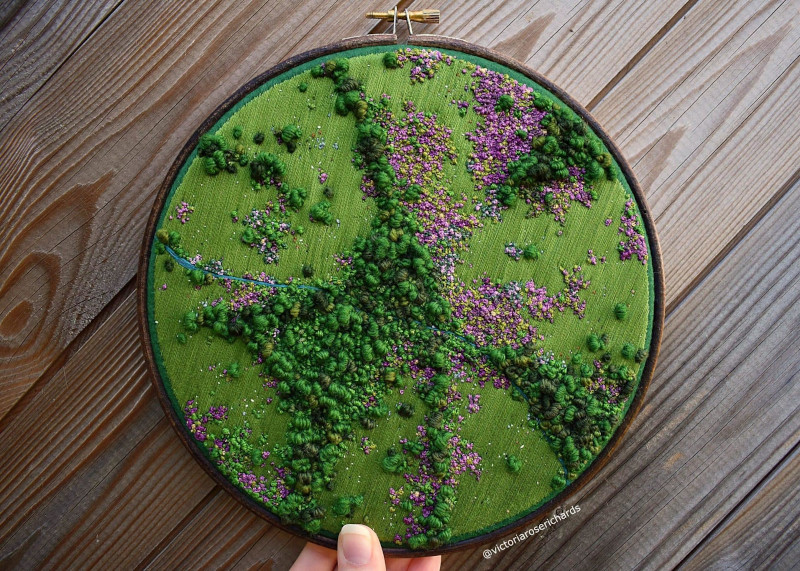
Victoria Rose Richards embroiders moors.
The artist lives in Plymouth, England, and creates aerial views in needlework of the Devon countryside.
More at My Modern Met.

Victoria Rose Richards embroiders moors.
The artist lives in Plymouth, England, and creates aerial views in needlework of the Devon countryside.
More at My Modern Met.
https://www.youtube.com/watch?v=Aw-E6LzJux8
This 2020 installation, by French artist Pierre Brault, is a reaction against accelerating lifestyles.
Fittingly, it takes a day to unfold.
During a visit to the Auschwitz-Birkenau Museum in 2016, University of Michigan music theory professor Patricia Hall discovered handwritten manuscripts of popular songs of the day. This one, “The Most Beautiful Time of Life,” is a light foxtrot based on a song by Franz Grothe, a popular German film composer. The prisoners had arranged it for the available instruments and musicians and probably performed it before the commandant’s villa in Sunday concerts for the Auschwitz garrison in 1942 or 1943.
“This was for the SS personnel,” she explained. “It was about a three-hour concert that was broken up into stages, and at one point, they had a dance band so that soldiers could dance. Given the instrumentation of this foxtrot, I think that’s probably what it was used for.”
Two of the arrangers had signed their prison numbers to the manuscript, so Hall was able to identify them: Antoni Gargul, a Polish soldier and a violinist, and Maksymilian Piłat, a professional bassoonist. Both of them survived the war, and Hall believes the unidentified third author may have as well.
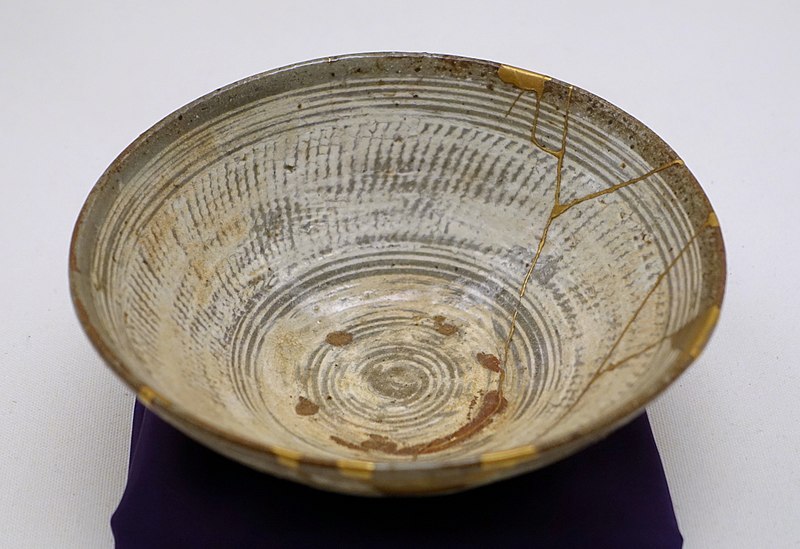
In the Japanese art of kintsugi, broken pottery is not discarded but mended with a lacquer mixed with gold, silver, or platinum, to connote an appreciation of the flawed and the imperfect and to mark the repair as one event in the object’s life, not the end of its useful service.
The Japanese philosophy of mushin finds an analogy with human life. Christy Bartlett writes in Flickwerk: The Aesthetics of Mended Japanese Ceramics (2008):
Not only is there no attempt to hide the damage, but the repair is literally illuminated … a kind of physical expression of the spirit of mushin. … Mushin is often literally translated as ‘no mind,’ but carries connotations of fully existing within the moment, of non-attachment, of equanimity amid changing conditions. … The vicissitudes of existence over time, to which all humans are susceptible, could not be clearer than in the breaks, the knocks, and the shattering to which ceramic ware too is subject.
“This poignancy or aesthetic of existence has been known in Japan as mono no aware, a compassionate sensitivity, or perhaps identification with, [things] outside oneself.”
(See Edifice Complex.)
Devised in 1948 by Russian choreographer Nadezhda Nadezhdina, the “floating step” of the Beryozka Dance Ensemble seems to carry dancers smoothly across the stage, as though their feet have left the ground.
“Not even all our dancers can do it,” Nadezhdina said. “You have to move in very small steps on very low half-toe with the body held in a certain corresponding position.”
For his 2010 film The Clock, video artist Christian Marclay compiled hundreds of movie and television clips that feature clocks or timepieces. He arranged these in order and set the total running time to 24 hours, so the piece itself functions as a clock — if it’s started at the right moment and run as a loop, the time references on the screen will correspond to the correct time in the theater.
Some oddities: There’s no clock face shown at 2:50 a.m. — instead a character in Night of the Living Dead says, “It’s ten minutes to three.” In his review in the Guardian, Peter Bradshaw notes that there are droll shots of sundials in period movies. And “There is an ambiguous moment from Easy Rider in which Peter Fonda looks at his watch (showing 11:40am) and throws it away. It appears to have stopped.”
The film toured art museums for eight years, finishing in 2017 in São Paulo.
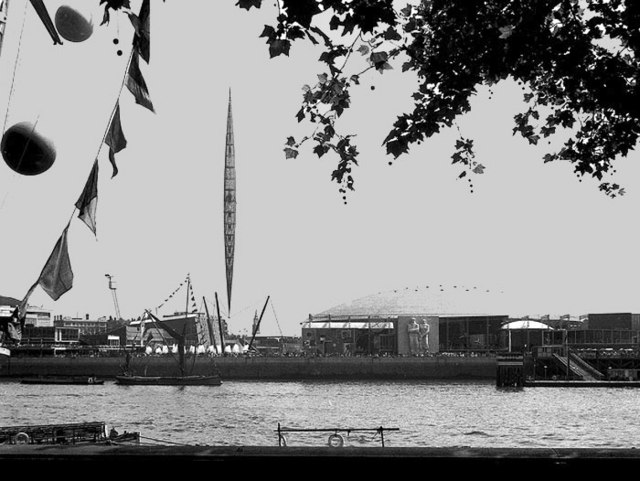
A striking symbol of the 1951 Festival of Britain was this cigar-shaped sculpture, which seemed to float impossibly 15 meters above the ground.
Designed by Hidalgo Moya, Philip Powell, and Felix Samuely, the structure relied on the principle of tensegrity: The base rested at the junction of three tensioned cables, and three further cables held the body vertical. Together, these six well-positioned supports were enough to keep the 80-meter sculpture from toppling.
Britons joked that, like the national economy at the time, it had “no visible means of support.”
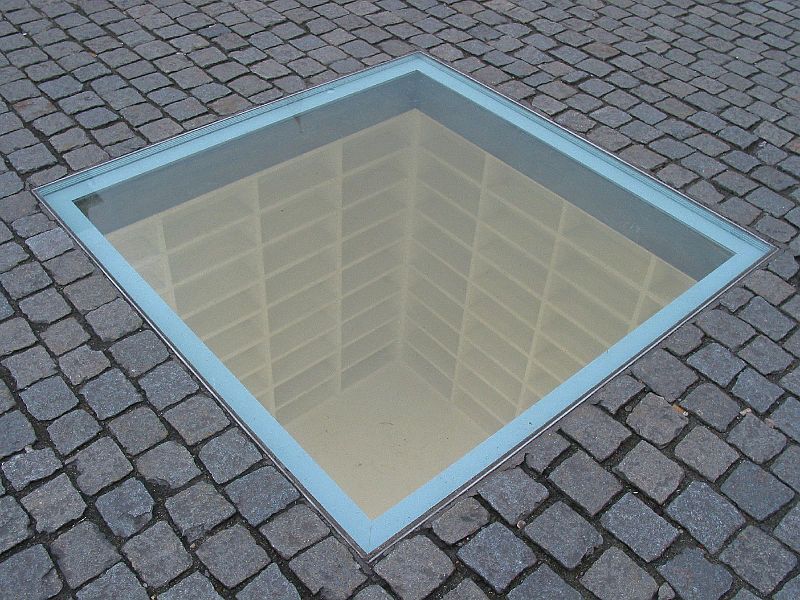
On May 10, 1933, in the Bebelplatz in central Berlin, members of the National Socialist Student Union burned 20,000 books, objecting to the “un-German spirit” of many Jewish, communist, and liberal authors. Joseph Goebbels declared that “the era of exaggerated Jewish intellectualism is now at an end … and the future German man will not just be a man of books … this late hour [I] entrust to the flames the intellectual garbage of the past.”
In 1995, Israeli sculptor Micha Ullman created a memorial room under the plaza, with empty shelves enough to accommodate 20,000 books. A plaque set into the cobblestones bears a quote by Heinrich Heine:
That was but a prelude;
where they burn books,
they will ultimately burn people as well.
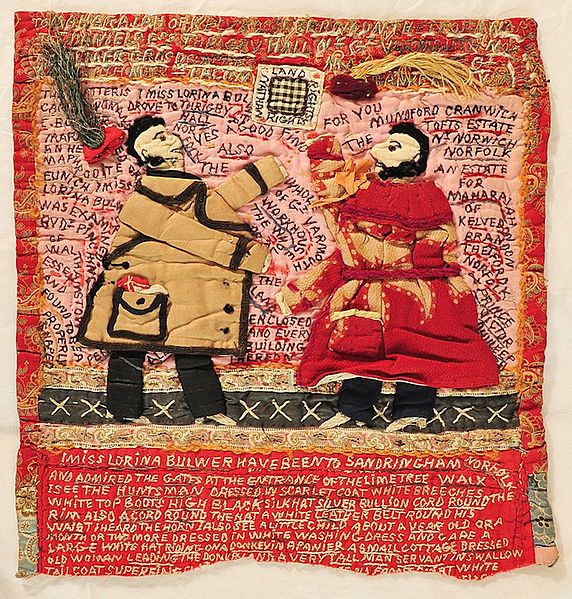
When 55-year-old Lorina Bulwer was placed in the Great Yarmouth Workhouse in 1893, she embroidered protests into long pieces of patchwork fabric, ranting in unpunctuated capitals:
THE CHATTER IS I MISS LORINA BULWER CAMBS WOMAN DROVE TO THRIGBY HALL NORFOLK E. BULWER MARRIED AN HEMAPHRODITE EUNICH I MISS LORINA BULWER WAS EXAMINED BY DR PINCHING OF WALTHAMSTOW ESSEX AND FOUND TO BE A PROPERLY SHAPED WOMAN …
Much of the invective is directed against E Bulwer and Queen Victoria, apparently trying to connect Bulwer’s family to prominent families of the time and possibly referring to sexual abuse in a scandal of 1859. But her reasons for making the samplers aren’t entirely understood.
Ruth Burwood, adult learning officer for Norwich Museums, told the Eastern Daily Press, “In very basic terms there isn’t anything like them in the world, they’re just absolutely extraordinary; the fact she was a woman in a lunatic ward in Great Yarmouth workhouse and was somehow able to produce these embroideries. Workhouse inmates did do sewing but this is almost like she’s been allowed to do this as therapy.”
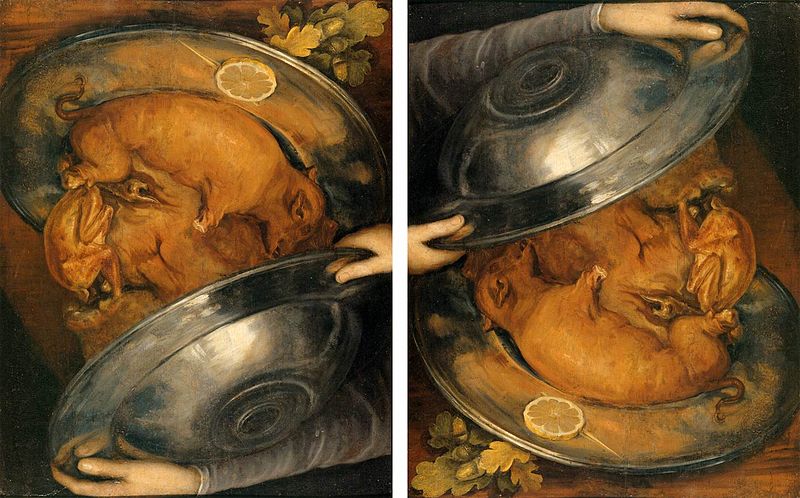
The Cook, a reversible portrait by Italian painter Giuseppe Arcimboldo, circa 1570.
Arcimboldo made a whole series of such paintings.